
At Summit Learning, we value diversity. Regardless of race, neighborhood, or prior academic experience, we believe every student is capable of high levels of academic and social achievement. Students benefit from a diverse school environment that mirrors our complex world, and deepens both academic and social learning. We are honored to welcome 2018 National Teacher of the Year Mandy Manning to the Summit Learning Blog to share her experience cultivating her diverse school community.
I teach students who have just arrived in our nation. Many are managing culture shock, post-traumatic stress disorder, and countless emotions related to fleeing their home countries to seek refuge.
As they adjust, they must also navigate our school system and figure out what it means to be a high school student in the United States — all while learning new customs, social norms and a new language. Feeling welcome and being part of a close and supportive community is essential to propelling them toward success as they embark on their educational journey.
As one of their first teachers in the United States, it’s my job to help create that sense of community at Joel E. Ferris High School’s English Language Development Newcomer Center in Spokane, Washington. Together, high school-age English Language Learners will spend one or two semesters studying English, foundational reading skills, mathematics, and computers. They earn high school credits, and learn about life in the United States as they start learning English.
I approach community building through three key stages.
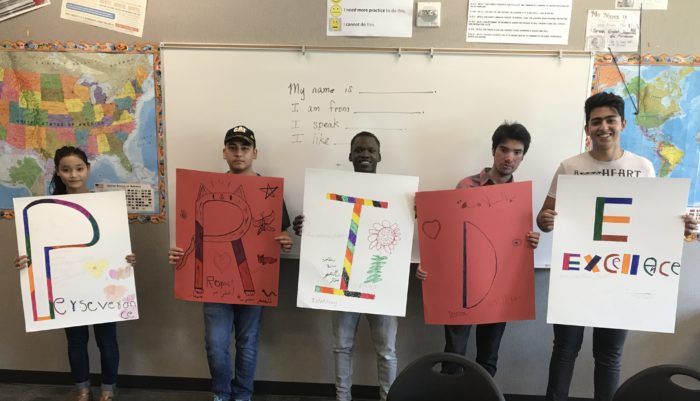
Stage I: Welcome Students Home into the Classroom
The first stage is the welcome. This is when we create a sense of family within our classroom, helping my students feel loved, supported, and comfortable in their new space. It’s a simple start with a smile and hug, and the message that we are so very excited and happy to have each of our students in our class and that we are honored to be walking on this journey together.
We then tour the school, meeting the teachers and administrators and exploring their new environment. We intentionally visit the school library, meet the principal and counselors and the school nurse, and tour the cafeteria and gymnasium.
I ensure students know the expectations in the lunch line and during lunch, where they can go to play basketball after finishing their meals and where they can also get food to take home should they need food for their families.
Essentially, I make sure students are comfortable navigating the school, that they understand norms and expectations, and that they know that our school is not only a place of learning, but a place filled with people who care about their well-being and that of their families.
During those first few weeks, I facilitate opportunities for the students to get to know one another.
One specific thing we do is create a “Who I am” poster. Students introduce themselves by sharing where they are from, what languages they speak, and something they like and something they do not like. Students then share these aloud. We continuously do activities like this throughout the first few weeks of school while increasing the language difficulty and adding questions. In those first few days we do most things together. We become a family.
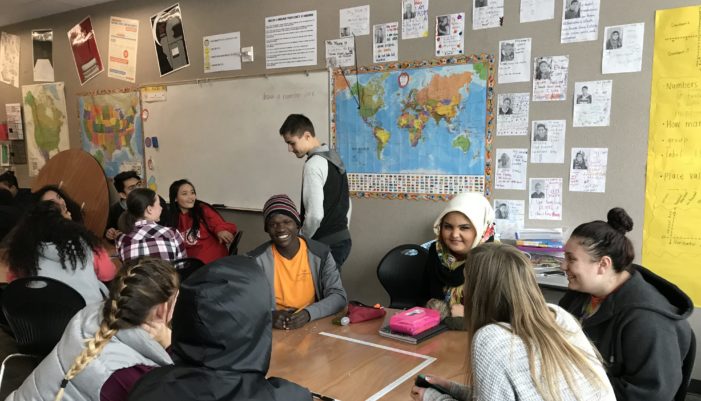
Outside of school, I make home visits to each of the students’ houses. I schedule a visit with each family to their home, usually on Friday afternoons or Saturdays. It is an informal visit, intended to build relationships and for me to get a glimpse of how my students live outside of school.
It’s important that parents know me and know how much I care about their children and that we are partners in helping their children achieve their potential. Students and parents learn that school is a second home for them, that they are supported, welcome, and that they matter.
Stage II: Welcome Students into the School Community
The second stage is connecting our classroom with others. This usually begins in the second month of school. My colleagues and I create opportunities for our students to get to know one another. This gives my students an opportunity to have real conversations with native English-speaking peers and exposes their peers to the other cultures in our school.
Most recently, I worked with one of our world history teachers. We brought our classes together to share culture and community. Her students came prepared with questions and my students also had questions for their peers born in the United States. We then brought our classes together for a game day and again later for a potluck-style celebration.
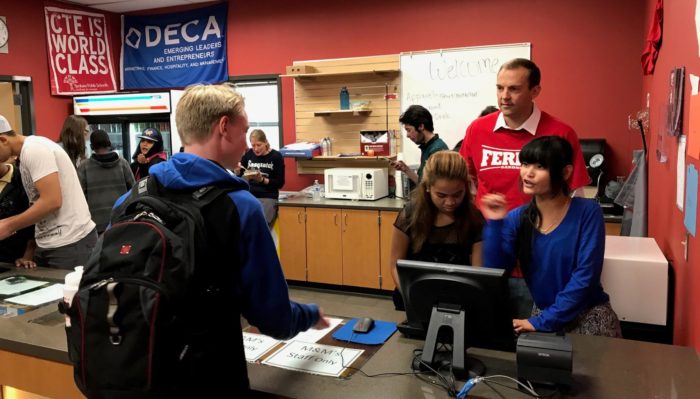
Our connections are mainly class-to-class, to encourage authentic relationships. We prefer this to a whole-school introduction, which can have the opposite effect and make our newcomers feel separate instead of connected to their peers.
I also ensure that our students get to know the teachers and students in the upper-level English language development classes, so students know what to expect once they leave the Center.
Stage III: Welcome Students into the Neighborhood
The third stage of our welcoming process is expanding our community to the neighborhood at large.
There are two aspects to this element of community.
First, I invite community members into our classroom. This includes volunteers who work with students one-to-one, such as local legislators and district administrators.
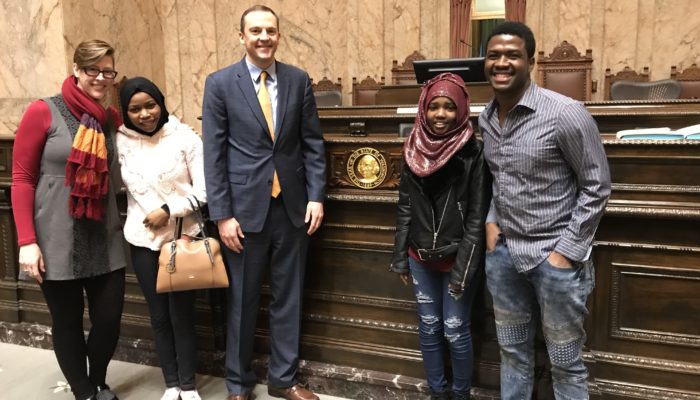
During the 2017-18 school year, we had four legislators visit our classroom. They also took a group of former students to the state capital to have a tour, meet their legislators, and testify on their own behalf in front of both the Senate and House education committees.
Second, I take my students out into the community. We physically go on field trips to local parks, to our downtown area, and also to our community libraries. We explore the city through map-making and giving and receiving directions. We meet community members in their places of business and help students feel part of the larger community in which they live. This is essential to easing their transition into living in their new country.
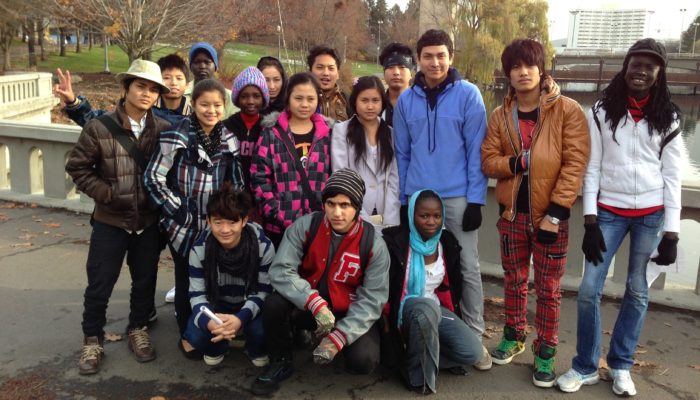
A Sense of Belonging
To be successful, it’s critical that my students not only feel a sense of belonging to the Newcomer Center, but to our school, community, and nation. This sense of community has supported our students to graduate on time and go on to post-secondary education.
When students leave our class, they are brave, they are confident and they feel connected to their peers and to their school community. Moving forward they can be fearless, hopeful, and confident contributing members of our community and our nation.

